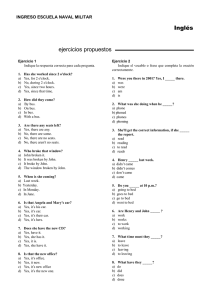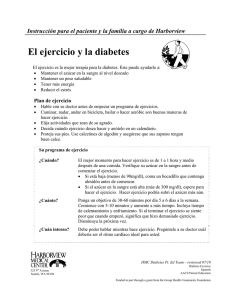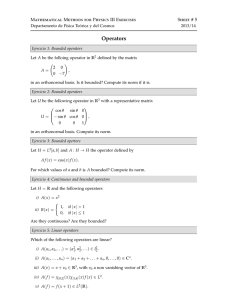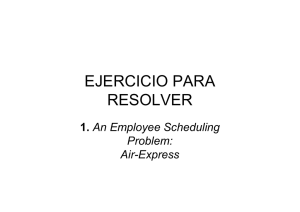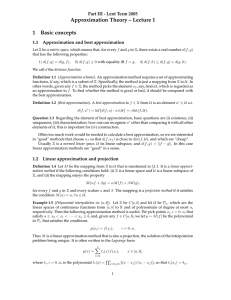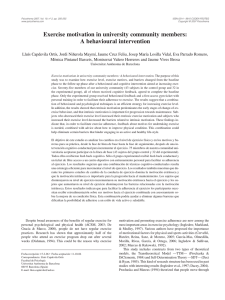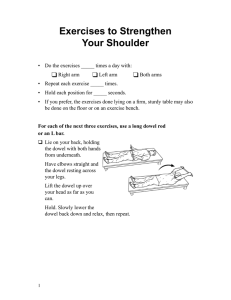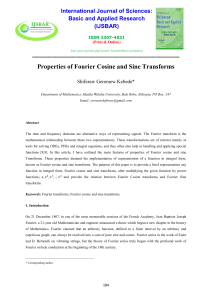Espaces of functions
Anuncio
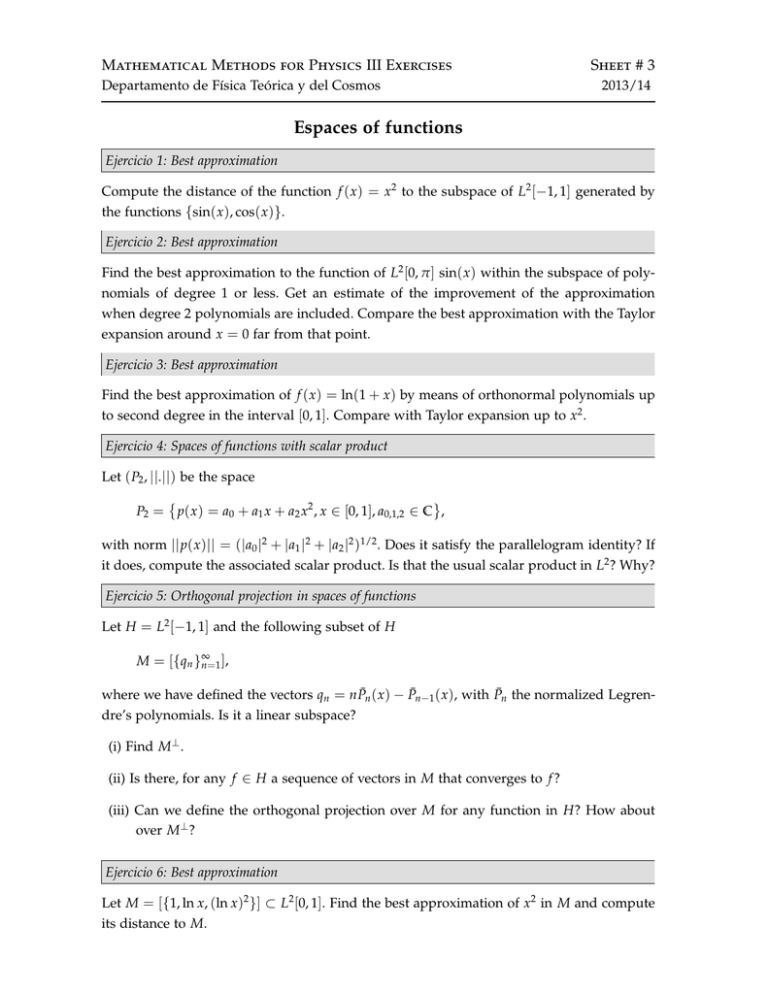
Mathematical Methods for Physics III Exercises
Departamento de Física Teórica y del Cosmos
Sheet # 3
2013/14
Espaces of functions
Ejercicio 1: Best approximation
Compute the distance of the function f ( x) = x2 to the subspace of L2 [−1, 1] generated by
the functions {sin( x), cos( x)}.
Ejercicio 2: Best approximation
Find the best approximation to the function of L2 [0, π ] sin( x) within the subspace of polynomials of degree 1 or less. Get an estimate of the improvement of the approximation
when degree 2 polynomials are included. Compare the best approximation with the Taylor
expansion around x = 0 far from that point.
Ejercicio 3: Best approximation
Find the best approximation of f ( x) = ln(1 + x) by means of orthonormal polynomials up
to second degree in the interval [0, 1]. Compare with Taylor expansion up to x2 .
Ejercicio 4: Spaces of functions with scalar product
Let ( P2 , ||.||) be the space
P2 = p( x) = a0 + a1 x + a2 x2 , x ∈ [0, 1], a0,1,2 ∈ C ,
with norm || p( x)|| = (| a0 |2 + | a1 |2 + | a2 |2 )1/2 . Does it satisfy the parallelogram identity? If
it does, compute the associated scalar product. Is that the usual scalar product in L2 ? Why?
Ejercicio 5: Orthogonal projection in spaces of functions
Let H = L2 [−1, 1] and the following subset of H
M = [{qn }∞
n = 1 ],
where we have defined the vectors qn = n P̄n ( x) − P̄n−1 ( x), with P̄n the normalized Legrendre’s polynomials. Is it a linear subspace?
(i) Find M ⊥ .
(ii) Is there, for any f ∈ H a sequence of vectors in M that converges to f ?
(iii) Can we define the orthogonal projection over M for any function in H? How about
over M ⊥ ?
Ejercicio 6: Best approximation
Let M = [{1, ln x, (ln x)2 }] ⊂ L2 [0, 1]. Find the best approximation of x2 in M and compute
its distance to M.
Mathematical Methods for Physics III Exercises
Departamento de Física Teórica y del Cosmos
Sheet # 3
2013/14
Ejercicio 7: Fourier expansion
Find a Fourier expansion in sines and cosines that converges point-wise in [−1, 1] to the
function f ( x) = x.
Ejercicio 8: Fourier expansion
Find the Fourier expansion in sines in [−π, π ] of the function sin3 x.
Ejercicio 9: Fourier expansion
Use the Fourier expansion in sines and cosines of the function f ( x) = x2 to find the value
of the following sums
∞
1
,
2
n
n =1
∑
∞
(−1)n
.
n2
n =1
∑
Ejercicio 10: Fourier expansion (problem to hand)
Find the Fourier expansion in sines and cosines for the function f ( x) = x2 in L2 ([−π, +π ])
and, using Parseval’s identity, show that
∞
1
π4
=
∑ k4 90 .
k=1
